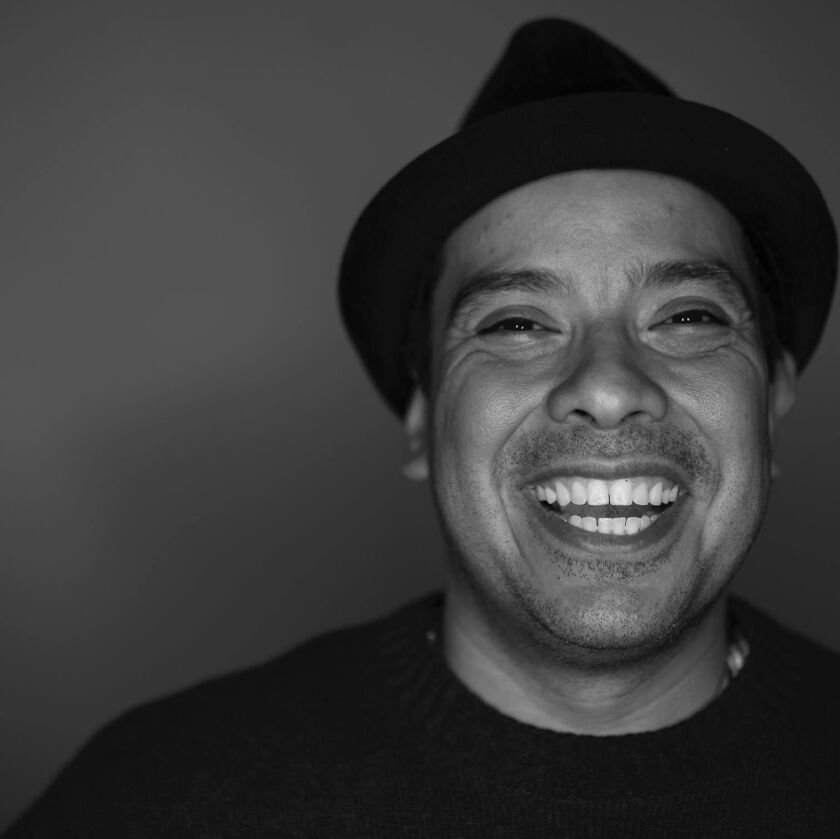After growing up in and around Pilsen, musician Maya Zazhil Fernandez will now be a semi-permanent fixture in the neighborhood — albeit a two-dimensional one.
Fernandez and her traditional Mexican music group, called Jarochicanos, are among 46 locals featured on a 4,000-square-foot mural completed earlier this year at 1113 W. 18th St. entitled “Somos Pilsen,” or “We Are Pilsen.”
Beyond conveying images of real people connected to the largely Mexican American community, the painting is intended to be a statement about the gentrification that’s been displacing some long-time residents and businesses because of rising rents.
“Pilsen’s gone through some pretty monumental changes,” says Pablo Serrano, a Pilsen artist who with Mateo Zapata completed the mural on the exterior of the Carnitas Don Pedro restaurant on Jan. 6. “But the art’s always been there — and the struggle and the need to express the cultural identity of a Mexican immigrant community like Pilsen.”
Jan. 6 is the same day that mobs of Donald Trump supporters stormed the U.S. Capitol — which Zapata noted was an ironic coincidence.
“We’re talking about trying to face the challenges of gentrification and displacement of Brown people,” Zapata says. “And then you have this massive show of force that represents white supremacy on Capitol Hill.”
The artists ended up including the shared date on the mural.
Fernandez, who’s of Mexican and Peruvian descent and still lives in Pilsen, was included in the center of the painting. Her music group, formed in 2008, has been giving free music workshops for more than a decade as well as performing at neighborhood events. She says her inclusion in the mural helps recognize the role of traditional music in Pilsen.
“For us it’s not so much about the individual or us individually being recognized, it’s about our work and the work that we do being seen as something that’s a part of the community,” says Fernandez, 26. “It’s a really humbling thing.”
There’s also a map of Latin America on the mural along with one of the American South. Serrano, 41, says he chose to include these to represent the migration of Black Americans and Latin Americans.
Gentrification — when more affluent people and businesses move into an area and displace lower-income residents — has been a hot topic in the neighborhood as more than 14,000 Latino residents have relocated since 2000, according to published reports.
With images of regular people — of varying races, the artists note — Zapata sees the mural as a form of resistance to the forces changing the neighborhood.
Displacement has been a theme through Zapata’s life as he was born in Colombia after his mother was previously exiled from Chile when it was under a dictatorship.
Zapata, 37, has also felt the effects of Pilsen’s gentrification, as he’s been forced to move further and further west over the last decade or so because of increasing rents to the east. Many friends and neighbors have had similar experiences, he says.
A phoenix takes up a large area of the mural and stands for resilience and “something that cannot be destroyed,” according to Zapata.
He’s talking here about history — that no matter what ultimately happens in Pilsen, its rich history can’t be erased.
The individuals included in the mural were people known by Zapata, Serrano or the Duarte family who own the building the mural is on and the attached restaurant. Those on the mural who are still alive then had their photos taken by one of the artists to use as a reference.
The mural, measuring 88 feet wide and 46 feet tall at its highest point, took at least 25 gallons of paint and over half a year to complete, done completely by paintbrush. Discussions between the artists and restaurant owners began in summer 2020, with the painting beginning in the early fall.
Magdalena Castaneda, 46, is one of the owners of the restaurant that was originally opened by her father in 1981 and says she loves how the mural highlights the roots of the neighborhood and those who worked to make it what it is today. Her mother, Magdalena Duarte, along with her father and the restaurant’s namesake, Pedro Duarte, are both pictured on the mural.
Serrano says what he enjoyed about working on the mural was seeing people who didn’t know each other meet at its unveiling, which was one of the first in-person events he did since the pandemic began.
“The mural was an opportunity to consciously connect people that were not connected but were one degree apart or two but that love Pilsen, love Chicago,” he says.









